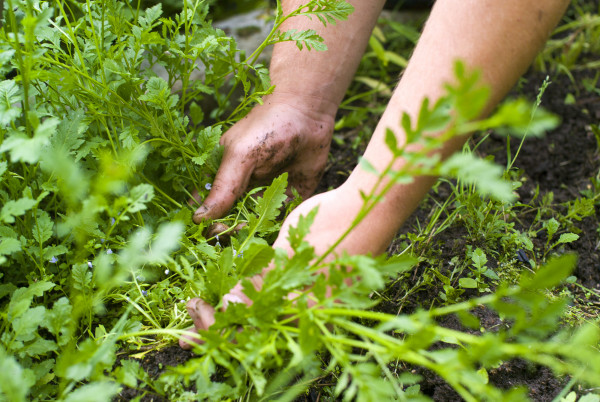No-dig gardening is exactly what it sounds like. By avoiding digging, you are not disrupting the soil – instead leaving it to its own devices.
Many people choose the no-dig method because of the success with ridding weeds and keeping them at bay. This method can help to save time, as well as being a good option for those who have back issues and find digging difficult.
WORRIED ABOUT WEEDS

It is an effective way to clear a weed-infested area. This can be done by covering the ground and excluding light so weeds can’t grow. Start by cutting down any tall weeds to ground height.
Then cover the surface with sheets or cardboard which will decompose. Plastic and carpet aren’t recommended as they won’t degrade and chemicals from the carpets can make their way into the soil instead.
Over the cardboard layer, add a thick layer of organic matter such as homemade compost from your compost mile, well-rotted manure, leaf mulch, straw, or grass clippings. Firm it down and tread it in.
Then, with a bit of patience the soil will have become so rich that the weeds can be pulled out with ease. Bear in mind that this process can take 6-12 months, so have plenty of patience.
Basically, due to the soil not being disturbed, it doesn’t bring weed seeds to the surface to germinate.
GROW ON

On the other hand, for areas that are already cultivated, add a layer of organic mulch to the bed, without digging before or after. Firm the mulch in place, and simply plant or sow directly onto the surface.
When sowing seeds, using a rake will help to create a soft crumbly texture on the surface. But when planting, there will be less weeds to compete with and the soil will be a great texture as it’s not too compacted so there are air passages for roots and moisture to access easily.
Every year in autumn, add a layer of well-rotted organic matter when all of the crops have been harvested and cleared. Alternatively, do this in springtime when the beds have been cleared of winter crops.
NO-DIG, NO PROBLEM

There are many benefits to the no-dig method of gardening. Firstly the soil being left to its own devices means organisms can work and multiply, therefore helping our plants to grow their best.
The structure of the soil also means that you can walk on the beds without worrying about the soil sticking to your shoes. Therefore, you don’t need to use lots of space on pathways, which in turn means more space for growing – it’s a win-win!
It’s also thought that adopting this method can decrease the number of slugs in your garden. Less cultivation means there is less compaction and fermentation. Less fermentation means that no alcohol is produced which leads to fewer slugs.
Using the no-dig method in your garden can help to rid weeds and save you time. It’s useful for gardeners who may find it difficult to dig too.

